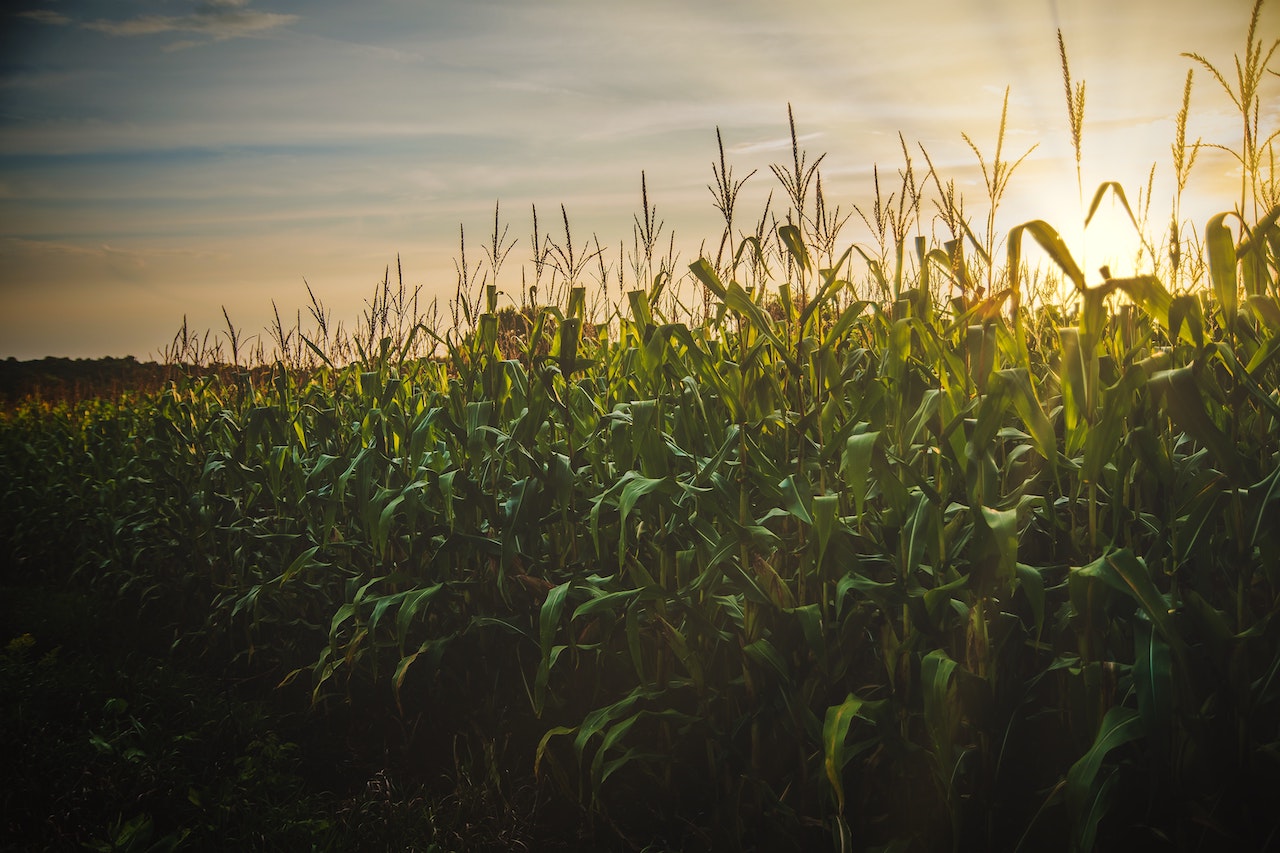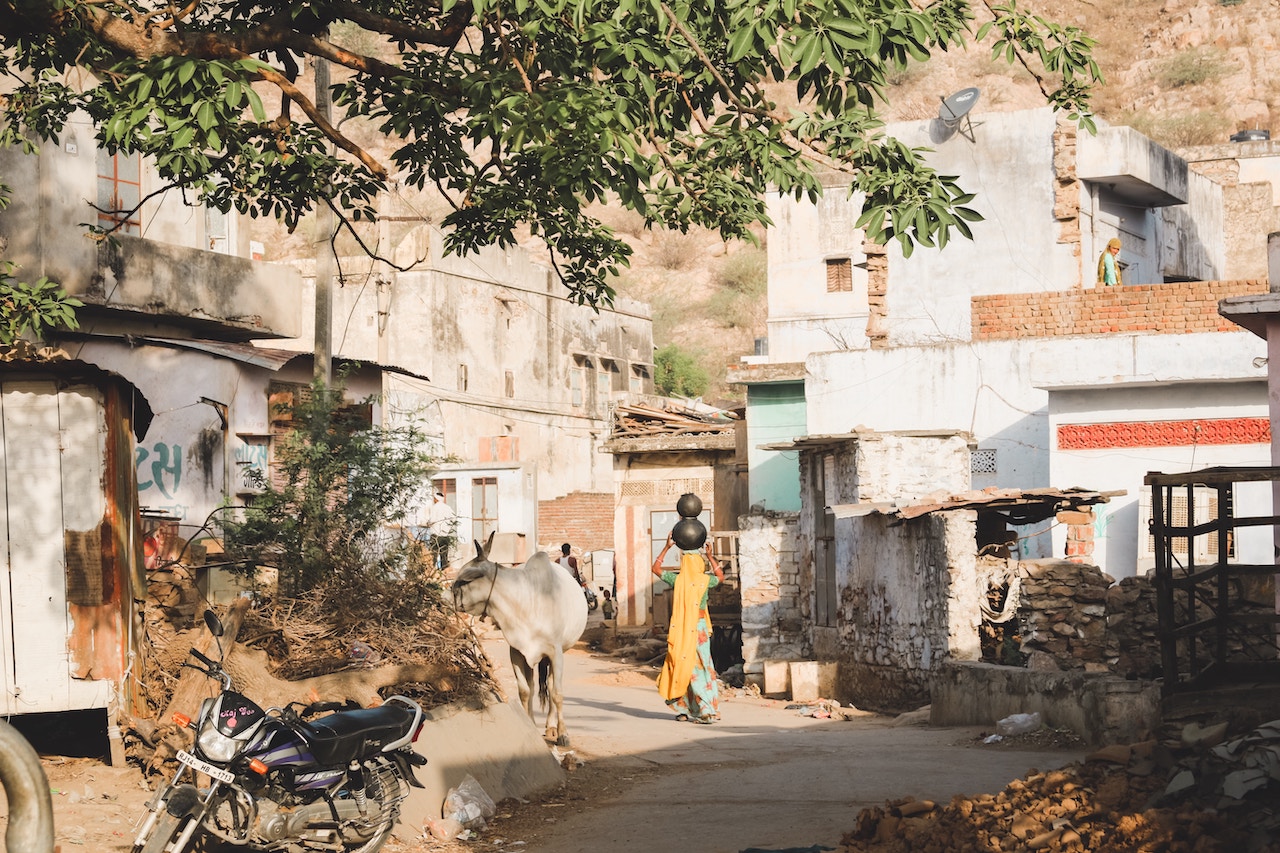A new IPCC report on land use concludes that global food security is under threat by human-caused climate change and rising CO2. This has been known for a long time, but the 2019 report will renew discussion about the agricultural challenges that humanity faces in a warming world. The report is preceded by overwhelming peer-reviewed research that rising CO2 is bad news for plants and crops. Let’s take a look at why the negatives vastly outweigh the positives.
1. CO2 fertilization is greening Earth
Firstly, we’ll acknowledge the positive that is widely quoted by climate skeptics. Yes, it is true that carbon dioxide fertilization is greening Earth. Plants with enough nutrients in the soil will green in response to increased CO2. However, there is a lot more to it. Is the fact that plants are greening really that beneficial? What about their nutrient content? Why are CO2 levels still rising? What impact will global temperature increases have? Now we’ll look at all the other impacts that rising CO2 has on plants and crops.
- Zhu, Z, et al. (2016). University of Exeter. Greening of the Earth and its drivers.
2. CO2 levels are still rising, while plants are becoming less effective carbon sinks
One might expect that plants would soak up all the extra CO2 caused by the burning of fossil fuels, after all, plants need CO2 to survive. But they are not, CO2 levels are still rising rapidly. Plants are struggling to be the carbon sinks we take for granted.
- See the Keeling Curve for current and past CO2 levels.
- Hubau, W, et al. (2020). Nature. Asynchronous carbon sink saturation in African and Amazonian tropical forests.
- Büntgen, U, et al. (2019). Nature. Limited capacity of tree growth to mitigate the global greenhouse effect under predicted warming.
- Brienen, R. (2015). Nature. Long-term decline of the Amazon carbon sink.
3. Rising CO2 is causing global heating and extremes of heat, drought, and flooding
The effects of global heating include rising temperatures and increasing extremes of heat, drought, and flooding.
A lack of water is devastating for plants and crops and is the “most important stress factor limiting plant life”. It reduces photosynthesis: Plants will slow down their production systems, close their stomatal pores (see 7.), and produce less chlorophyll. It causes protein synthesis issues: Plant proteins are drastically reduced, leading to gene alteration, and membrane disturbances that affect lipids crucial for plant growth. It also causes Wilting-Tugor Pressure.
Similarly, extreme flooding is not good news either: the water has little time to soak into the ground and instead washes away large amounts of soil and fertilizer.
Many plants and crops are also far less productive when faced with heat stress. For example, there is a significant reduction in maize yield for each day above 32 °C.
- Li, Y, et al. (2019). University of Illinois Urbana-Champaign. Excessive rainfall leads to maize yield loss of a comparable magnitude to extreme drought in the United States.
- Zhu, K, et al. (2016). Stanford University. Nonlinear, interacting responses to climate limit grassland production under global change.
- Liu, B, et al. (2016). Nanjing Agricultural University. Similar estimates of temperature impacts on global wheat yield by three independent methods.
- Hatfield, J, et al. (2015). United States Department of Agriculture. Temperature extremes: Effect on plant growth and development.
- Williams, C. (2014). Clark University. Heat and drought extremes likely to stress ecosystem productivity equally or more in a warmer, CO2 rich future.
- Silva, E, et al. (2013). Drought and Its Consequences to Plants – From Individual to Ecosystem.
- Hawkins, E. (2012). Increasing influence of heat stress on French maize yields from the 1960s to the 2030s.
- Battisti, D and Naylor, R. (2009). Historical Warnings of Future Food Insecurity with Unprecedented Seasonal Heat.
4. Crops are becoming less nutritious with a decrease in iron, zinc and protein
A decrease in the iron, zinc and protein content of crops as a result of rising CO2 and global heating has been observed by scientists around the world. Nutrient deficient countries will be disproportionately affected.
An increase in artificial fertilizer use is required. However, artificial fertilizer has other environmental impacts including emissions from ammonia and nitrous oxide, and a decrease in soil quality. It is also unaffordable for poorer farmers in third world countries.
- Beach, R, et al. (2019). International Food Policy Research Institute. Combining the effects of increased atmospheric carbon dioxide on protein, iron, and zinc availability and projected climate change on global diets: a modelling study.
- Zhu, C, et al. (2018). University of Tokyo. Carbon dioxide (CO2) levels this century will alter the protein, micronutrients, and vitamin content of rice grains with potential health consequences for the poorest rice-dependent countries.
- Myers, S, et al. (2014). Harvard University. Increasing CO2 threatens human nutrition.
- Loladze, I. (2014). Catholic University of Daegu. Hidden shift of the ionome of plants exposed to elevated CO2 depletes minerals at the base of human nutrition.
- Henao, J and Baanante, C. A. (1999). International Fertilizer Development Center, Alabama. Estimating Rates of Nutrient Depletion in Soils of Agricultural Lands of Africa.
5. The fertilization effect diminishes when nutrient limits are reached
A common argument in favour of rising CO2 is that farmers increase CO2 levels in their greenhouses to improve plant growth. However, this is because farmer greenhouses are controlled environments. The correct nutrients, water, and temperatures are provided in addition to the CO2.
Unfortunately there is no way to provide the correct amount of nutrients, water, and local temperatures across the entire planet. When uncontrolled plants and forests run out of nutrients, the fertilization effect is diminished.
Again, farmers can apply more artificial fertilizer to their crops, but as explained in section 4, this is not sustainable.
There is plenty of research on the nitrogen and phosphorus limitations of plants.
- Craine, J, et al. (2018). University of Maryland. Isotopic evidence for oligotrophication of terrestrial ecosystems.
- Wang, Z, et al. (2017). Auburn University. Phosphorus Limitation on CO2 Fertilization Effect in the Terrestrial Ecosystems.
- Martins, R, et al. (2017). Universidade Federal de Goiás. Effects of increasing temperature and, CO2 on quality of litter, shredders, and microorganisms in Amazonian aquatic systems.
- Weider, W, et al. (2015). Nature Geoscience. Future productivity and carbon storage limited by terrestrial nutrient availability.
- Norby, R, et al. (2010). Oak Ridge National Laboratory. CO2 enhancement of forest productivity constrained by limited nitrogen availability.
- LeBauer, D and Treseder, K. (2008). Ecology. Nitrogen limitation of net primary productivity in terrestrial ecosystems is globally distributed.
6. Rising CO2 is causing plants to thicken their leaves and become less efficient at sequestering carbon
The leaves of plants are becoming thicker in response to rising CO2, which may sound like a positive, but it’s not. The photosynthesis productivity and evapotranspiration of plants is reduced and their role as a carbon sink along with it, leading to even higher global temperatures.
- Kovenock, M and Swann, A. (2018). Leaf Trait Acclimation Amplifies Simulated Climate Warming in Response to Elevated Carbon Dioxide.
- Poorter, H, et al. (2009). Utrecht University. Causes and consequences of variation in leaf mass per area (LMA): a meta‐analysis
7. Rising CO2 results in a drier atmosphere due to a decrease in plant pores, in turn reducing global vegetation growth
The density of plant pores through which plants breathe have decreased by 34% in Florida. Plants are reacting to rising CO2 by being more conservative with water. At first glance this may seem like a positive sign that plants are adapting, but it disrupts the hydrologic cycle, resulting in a drier atmosphere and less rainfall. This has the knock-on effect of reducing global vegetation growth.
- Yuan, et al. (2019). Science Advances. Increased atmospheric vapor pressure deficit reduces global vegetation growth.
- Mankin, J, et al. (2019). Nature Geoscience. Mid-latitude freshwater availability reduced by projected vegetation responses to climate change.
- Lammertsma, E, et al. (2011). Indiana University. Global CO2 rise leads to reduced maximum stomatal conductance in Florida vegetation.
- Zhao, M and Running, S. (2010). Science. Drought-Induced Reduction in Global Terrestrial Net Primary Production from 2000 Through 2009.
8. Rising CO2 favours certain invasive plants such as flammable cheatgrass
There is no doubt that plants will adapt to climate change, but the question is which ones will survive? As you would expect, it’s the hardy, dominant and weedy species that will survive. These species are mostly troublesome and not very useful, beneficial or nutritious to humans or animals. One example is cheatgrass, which is flammable and fuels wildfires.
- Sheppard, C. (2014). Cambridge University. Does Elevated Temperature and Doubled CO2 Increase Growth of Three Potentially Invasive Plants?
- Yu, T, et al. (2010). Washington University in St. Louis. Variability in C3-Plant Cell-Wall Biosynthesis in a High-CO2 Atmosphere by Solid-State NMR Spectroscopy.
- Smith, D. (2000). Nature. Elevated CO2 increases productivity and invasive species success in an arid ecosystem.
9. Rising CO2 is reducing the protein concentration of pollen essential to bees
Goldenrod pollen is becoming less nutritious due to rising levels of CO2 according to a Purdue University study. Pollen helps bees maintain immunity from pathogens and parasites. According to co-author Jeffery Pettis, research entomologist with the U.S. Department of Agriculture’s Agricultural Research Service: “Declines in pollen protein could potentially threaten bee health, survival, and weaken bees’ ability to overwinter on a continental scale. Previous research shows bees have shorter lifespans when fed lower quality pollen.”
Co-author Jeffrey Dukes, professor of forestry and natural resources and biological sciences said: “The impact of carbon emissions on the nutritional value of our food supply is something people need to be aware of. This issue isn’t just relevant to honeybees and people – it will probably affect thousands or even millions of other plant-eating species around the world. We don’t yet know how they’ll deal with it.”
- Ziska, L, et al. (2016). US Department of Agriculture. Rising atmospheric CO2 is reducing the protein concentration of a floral pollen source essential for North American bees.
10. Rising CO2 causes an increase in insects eating plants and a decrease in plant defense against invasive insects
According to plant fossils from the PETM around 55 million years ago, increased insect herbivory was found as a result of rapidly rising CO2. In simple terms, the warmer temperatures meant insects were eating more plants. Compounding this is the impairment of a key component of a plant’s defenses against leaf-eating insects due to elevated CO2.
- Deutsch, C, et al. (2018). Science. Increase in crop losses to insect pests in a warming climate.
- Currano, E, et al. (2008). Penn State. Sharply increased insect herbivory during the Paleocene–Eocene Thermal Maximum.
- Zavala, J. (2008). University of Illinois at Urbana-Champaign. Anthropogenic increase in carbon dioxide compromises plant defense against invasive insects.
11. Human activity in China and India dominates the greening of Earth
According to a recent Nature study, over a third of the greening of Earth is due to humans. The greening in China is from forests (42%) and croplands (32%), but in India is mostly from croplands (82%) with minor contribution from forests (4.4%). The increase in croplands is thanks to fertilizer use and surface and/or groundwater irrigation.
As mentioned above, farmers can increase the use of artificial fertilizer in response to rising CO2, but this is not natural. So if humans planting trees and applying fertilizer is responsible for over a third of greening, then the amount of natural greening due to rising CO2 on uncontrolled plants is far less than previously thought.
- Chen, C, et al. (2019). Nature. China and India lead in greening of the world through land-use management.
The content of this article may change to ensure it is up to date with the latest research. If you would like to suggest improvements or contribute to this article, please contact us.
Last Updated: 5th March, 2020


 Science 6 years ago
Science 6 years ago
 Opinion 6 years ago
Opinion 6 years ago
 Science 6 years ago
Science 6 years ago
 Opinion 6 years ago
Opinion 6 years ago
 Politics 6 years ago
Politics 6 years ago
 Opinion 4 years ago
Opinion 4 years ago
 Politics 6 years ago
Politics 6 years ago
 Politics 6 years ago
Politics 6 years ago



